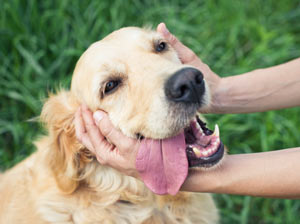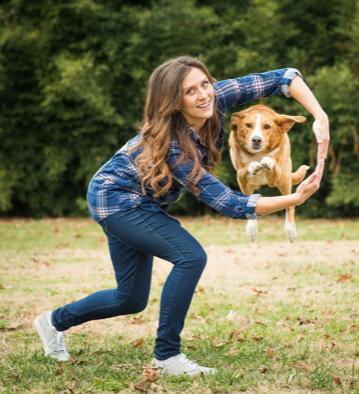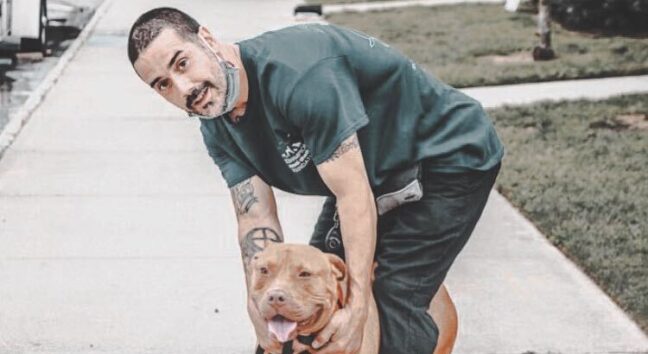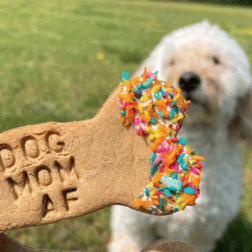There is an ongoing joke amongst dog trainers that goes like this: “The only thing two dog trainers can agree on is that the third dog trainer is always wrong.” In my personal experience as a trainer I have been fortunate enough to have mentorship under extremely bright and skilled trainers whose methods varied. I have learned the benefits of Positive Reinforcement training and have also learned the benefits of Positive Punishment, Negative Reinforcement and Negative Punishment. Now, before you utter to yourself, “what in the heck is this guy talking about,” rest assured that I am going to break down, to the best of my mere human ability, what those four things mean, (referred to as the “4 Quadrants” of learning) as well as how I think they relate to the everyday dog lover and pet parent. When I first learned about these 4 Quadrants, I literally walked around cross-eyed for a day or two trying to wrap my brain around the concepts, so have no fear my dog loving friends, we are all in this together and together we will succeed! (cue the cheering crowd!)

Although the above-referenced joke is amusing, it serves as a reminder of what I often find to be a complex topic among trainers. Canine behavior is formed upon so many factors and each particular dog needs to be looked at as an individual.
Dog Trainers Differing in Opinion

Consequently, dog trainers and dog parents need to be able to use different approaches depending on the individual dog. This is what makes dogs and humans so compatible. We are simple and alike, yet completely unique and different. If we are being honest with ourselves, we are also completely out of our minds most of the time. In my personal experience, it has been imperative to take a moderate approach in training, at all times utilizing the four quadrants in a balanced and humane way. There is a huge push for “positive only” dog training nowadays, wherein we “add” something (like a treat) to reinforce a certain behavior, but did you know that any time you utilize a collar that applies pressure to a dogs neck you are actually using “Positive Punishment?” This simply means you are “adding” something in the form of an aversive (collar pressure) in order to achieve the desired result. As a matter of fact, even a harsh “no” yelled at your dog in the midst of a frustrating moment can be considered a positive punishment because you are “adding” the “no” as a form of punishment. So we see that in regards to the four quadrants of behavioral learning, positive simply means to add something and negative simply means to take away.
Let’s Nerd Out

For the true dog-loving nerds like myself, I highly recommend picking up two books that go in-depth on this subject: How Dogs Learn by Mary R. Burch and Excel-erated Learning by Pamela J. Reid. Both of these books break down canine learning behavior in such a profound way that when I reference them I still feel like a mere mortal who knows absolutely nothing about dog training. You know what they say, humble is the way!
Let’s look at some basic examples of how the four quadrants of learning might be taking place in your everyday relationship with your your dog. For instance, say your dog has a terrible habit of jumping on you and humping your leg like a college frat boy who can’t take no for an answer. In response to this, you turn away and remove yourself from the room leaving your dog lonely and dejected. You have just used the Negative Punishment quadrant on poor your dog because in this instance you “took away” yourself and left your dog alone, hence punishing them by removing the one thing they want most in the world. On the flip side of this, if you were to grab your dog by their scruff and scream in their face “No humping you little perv!” you would then be using Positive Punishment in the form of “adding” your screaming and applying pain by grabbing his scruff. Be forewarned that this type of Positive Punishment does not work for behavioral change and if it does work it is for the wrong reasons. A terrified dog is not a well-behaved dog, rather he or she is a dog who becomes a ticking time bomb.
I highly suggest that regardless of what methods you are using that you remain calm, consistent, and loving the entire time. In the shelter environment, I often work with big, strong dogs, some of whom have overstimulation issues in which I have to use a Martingale collar (a collar designed to apply a limited amount of pressure to the neck) to handle said dog. Even in the midst of a 90 pound Pitbull flying off the handle and trying to put his mouth around my legs, feet, and arms because he wants to “play,” I know it is imperative to utilize my methods of collar pressure in a relaxed and consistent manner. Yelling and harsh corrections only prove to add to the over-arousal and by applying positive punishment (adding a safe amount of collar pressure) I am then able to utilize Negative Reinforcement when the dog follows my cue to relax or sit by “taking away” the collar pressure which then reinforces to the dog that sitting or relaxing takes away the collar pressure, hence “negative reinforcement.” This is the same concept that the average dog parent uses without even knowing it. For example, Little Fifi pulls on the leash adding pressure to her collar. As a result, Mom or Dad stops walking until Fifi stops pulling. Once the leash is loose the collar pressure is taken away and the walk can continue. You are adding a positive punishment via collar pressure and then the loosening of the leash and subsequent collar pressure being “taken away” reinforces to Fifi that this is the behavior that gets the reward! The reward in this instance is being able to continue to walk.
My First Choice: Positive Reinforcement

In any training situation, (and keep in mind that almost every situation you face with your dog is a teachable and trainable moment), I would always encourage Positive Reinforcement as your first approach.
Adding a reward to reinforce the desired behavior is the absolute best way to get a strong result from your dog. Plus, most dogs love food, and food is the ultimate reinforcer. (positive praise is also rewarding.)
Positive Reinforcement is the reason why dogs are able to build trust and start to feel secure. If you are fortunate enough to be raising a puppy then positive reinforcement should be your go-to strategy more often than not. Second, I would recommend using Negative Punishment in instances like obsessive jumping, attention-seeking, or demand barking. Simply removing yourself (taking away) from the equation is often a strong reiteration to your dog that a certain behavior will simply not be tolerated and if it persists then you will leave. Remember, your goal is to become your your dog’s primary motivator. And don’t forget, you can and will become your dog’s end all be all, so removing yourself often serves as a safe and effective form of punishment. Knowing that your dog will look to you for everything can empower you to make the best decisions for them in order to guide and teach them in their behavioral growth.
Positive Punishment and Negative reinforcement will also come into play as well, but the obvious approach is to avoid Positive Punishment as much as possible. Aversives like E-Collars, shake cans and even spray bottles can cause more damage to a dog who might already be living in an a state of imbalance and if these techniques are used even the slightest bit wrong, the average dog parent runs the risk of exacerbating whatever behavioral issues are present or hiding underneath the surface.
I would recommend to anyone who has a dog, whether it be a new puppy, a rescue, a shelter adoption, or a senior dog, to seek and hire a professional in the beginning stages to guide you on your journey with your canine companion. Do your best to tap into your natural intuition as you learn about what is best for your particular dog. Our personalities matter and it is important to become conscious of how your thoughts, movements, and approach might impact your dog’s individual personality.

Remember what I said early on: We are simple and alike yet unique and different, so we must approach our training relationship with balance, moderation, objectivity, and a willingness to consider all possible methods.
Happy training my friends, I am certain that somewhere out there, there are two dog trainers talking about how this entire article is wrong. Until next time, In Dogs We Love!
What are your thoughts on the 4 quadrants of training?




